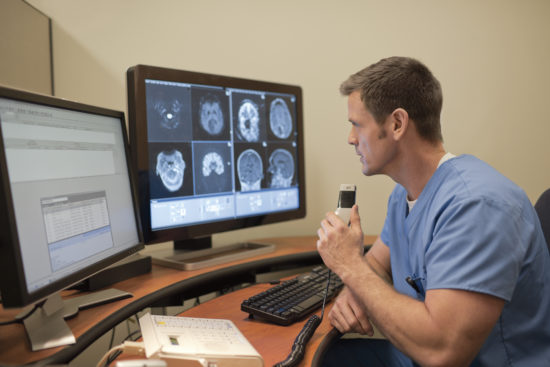Co-Authored with Barbara Casey, Senior Director of Global Healthcare at Cisco
Who doesn’t want better healthcare? Whether you’re a patient or clinician, healthcare affects almost everybody. Providers are seeking ways to advance quality care and make it more affordable, while patients are expecting their experiences to be better than in the past. By embracing 5G, healthcare providers can improve quality of care and make services convenient and accessible for everyone. Personalized experiences, whether online or in person, can help boost satisfaction for patients and caregivers.
As healthcare services continue to evolve through digitization and analytics, a vast amount of data is being generated. Managing, storing, and transferring this data presents its own set of challenges, especially related to security and privacy. There is a need to provide this data to patients, healthcare providers and administrators in a timely manner, on a variety of devices and locations, to improve clinical outcomes and patients’ experience. Today’s healthcare providers face data management issues related not only to patients, but also equipment, operations, maintenance, personnel, and supplies. As wireless and mobile (radio) technology continue to evolve, the healthcare ecosystem stands to benefit from these advances, particularly from 5G, the fifth generation of cellular technology.
The healthcare ecosystem
The healthcare ecosystem encompasses everything from critical care equipment, ambulances, patient information and radiology to wearables that monitor patient health. The IT systems require high reliability, high bandwidth, and low latency to deliver data to the right people at the right time. The needs for connectivity and access involve many different people, places, and devices – from hospitals and clinics to financial services, devices and sensors, ambulatory care and physical plants.
 Why 5G matters
Why 5G matters
5G technology promises improved performance and significantly greater bandwidth over 4G, enabling the transfer of huge data files like the ones generated by medical imaging devices. The images generated by MRI, CAT, or PET scans for just one patient can generate hundreds of gigabytes of data.
5G also promises lower latency, which can improve the performance of critical care applications. This is especially dire in situations where decisions must be made quickly and response times are critical. The dense, distributed-access architecture of 5G networks has the potential to unlock data from IoT sensors and devices. It will exploit cloud technologies and include edge computing solutions to rapidly share information and collaborate across multiple entities.
The industry is still uncovering all the myriad ways 5G might be used, but it’s clear that the increased speed, bandwidth, and low latency will benefit healthcare, especially around telehealth, asset tracking and proactive maintenance.
Remote care and telehealth
5G technology should improve connectivity in underserved rural areas and in cities where demand currently outstrips capacity. These rural areas often have limited access to healthcare services, so patients have few choices or are forced to travel long distances.
Telemedicine or telehealth is the ability to remotely diagnose people where doctors aren’t available. It can reduce healthcare costs while broadening access to more patients. According to a study by Market Research Future, the telemedicine market is expected to grow at a compound annual growth rate of 16.5% from 2017 to 2023.1
By extending health care providers’ reach beyond hospitals, telemedicine will improve access to quality care. Currently, the American Medical Association is advocating expanding broadband access to underserved areas to promote the development of telemedicine services.2
With 5G, providers can extend services outside the hospital, whether it’s to an ambulance, a mobile clinic, or the comfort of your own home. Doctors can quickly gain access to high-quality imaging scans and clinicians can collaborate with colleagues across the street or around the world. 5G can enable advanced high-quality video, real-time imaging, and collaboration technologies because of its low latency and high speed. Because of the expected improvements in remote care, rural patients can be treated sooner and have access to specialists that might not otherwise be available.3
5G and private networks
With Network Slicing, IT departments of healthcare entities can create their own private mobile networks. This ability to manage quality of experience, data privacy, confidentiality and other functionalities on a mobile network is a significant opportunity.
5G and connected devices
Wearables are another form of connected devices. The Apple Watch, Fitbit, and smartphones have connected health monitors that can benefit patients in multiple ways. In fact, an Apple Watch recently saved a person’s life because the EKG sensor triggered an alert.4
Harness the potential of 5G
Improving medical care and keeping it affordable is a never-ending challenge. Technology tools like telehealth and wearables have become important aspects of high-quality medical care and 5G is likely to play an ever-increasing role in optimizing the performance of these tools. Investing in 5G can help care teams work more efficiently and optimize operations for better information sharing.
Take a look at the other blogs in this series:
- Five Industries for Monetizing your 5G Investment
- How 5G Can Make Smart Cities Even Smarter
- 5G Shopping? A Match Made in Retail Heaven
- 5G is the Future of the Industrials Sector
Learn more about Cisco’s mobility products and innovations, and watch this video on connected devices.
(Click frame to start video)
References
- https://www.beckershospitalreview.com/telehealth/global-telemedicine-market-to-experience-16-5-annual-growth-rate-through-2023.html
- https://www.ama-assn.org/press-center/press-releases/new-ama-policies-adopted-final-day-2018-interim-meeting
- https://www.nursingtimes.net/nurses-waste-an-hour-a-shift-finding-equipment/1987381.article
- https://www.cultofmac.com/547479/apple-watch-saves-another-life/

This is amazing. That’s what technology is for. Such an inspiring article about healthcare.
Nutrindo Ideias